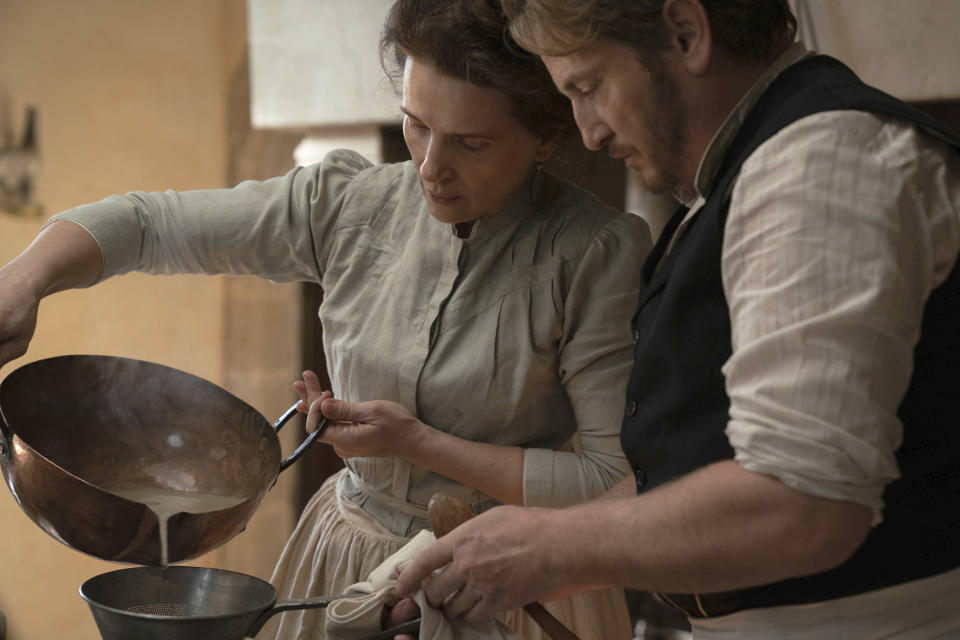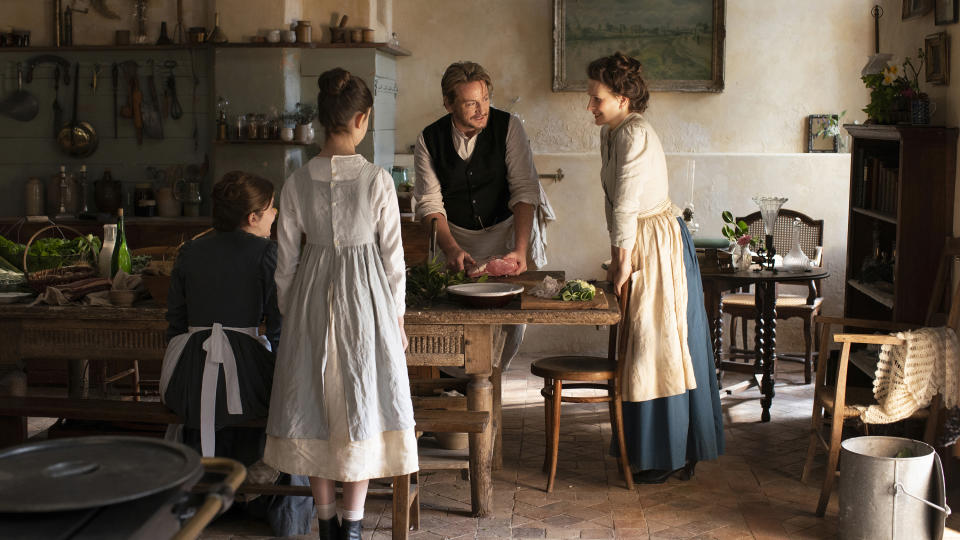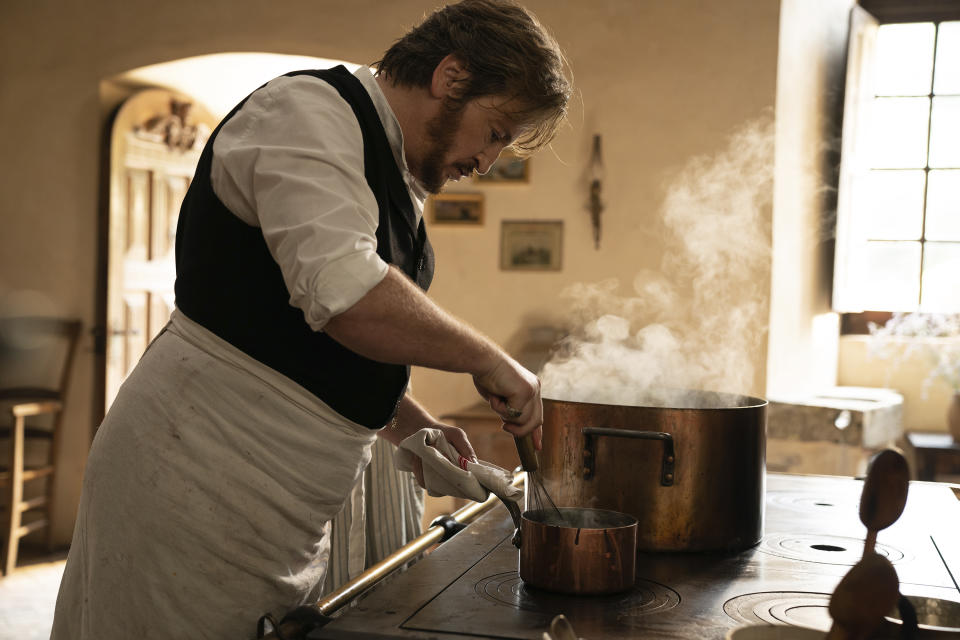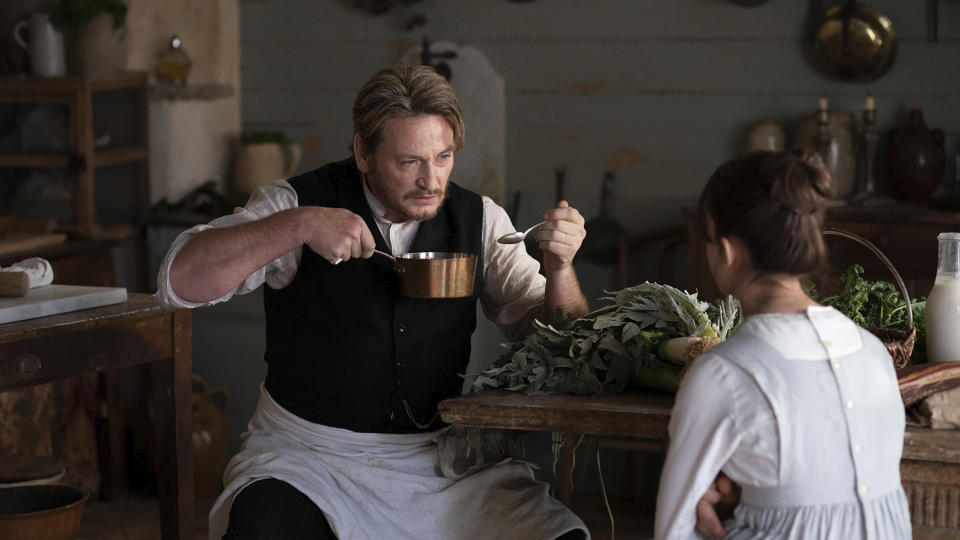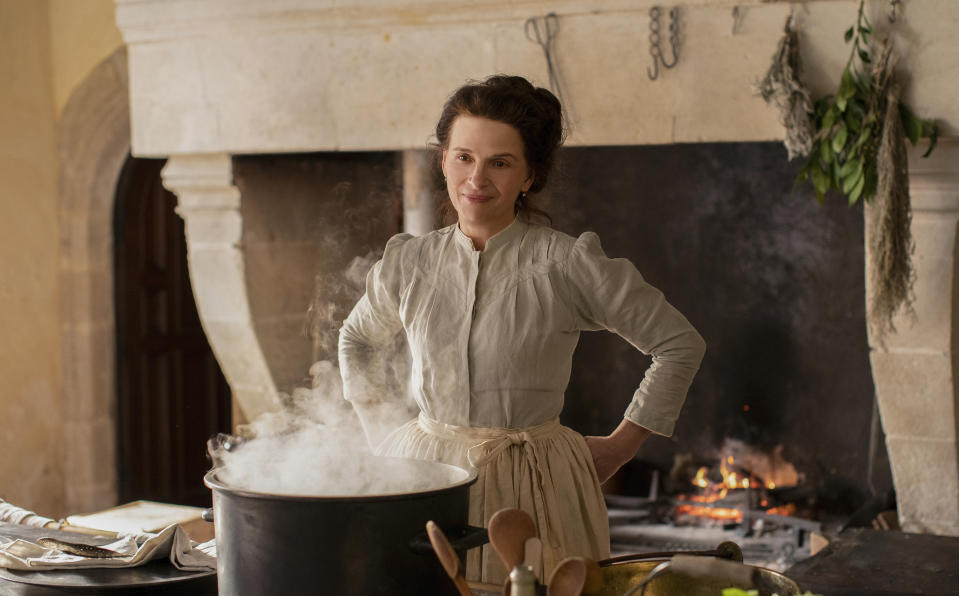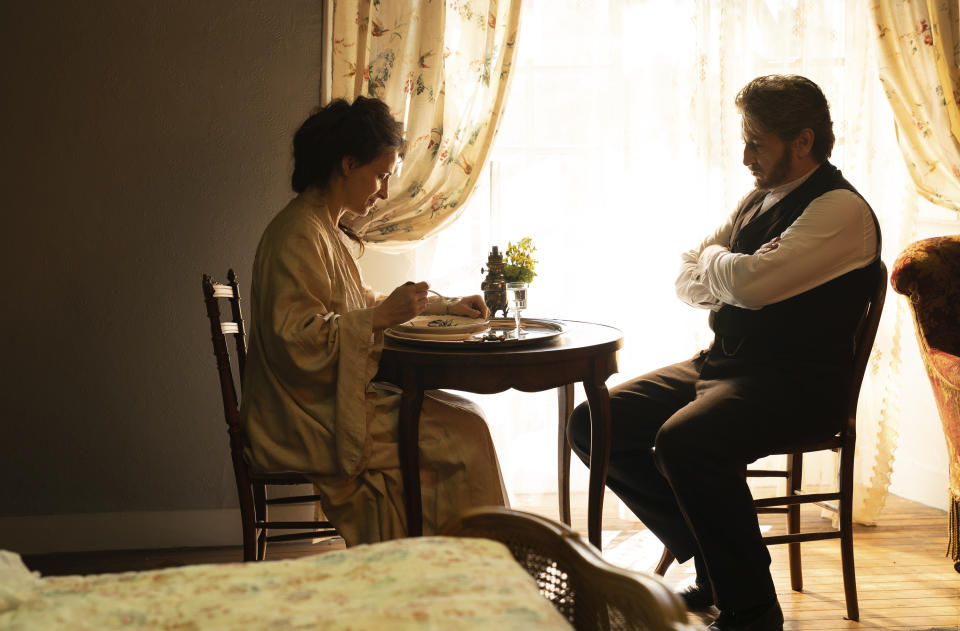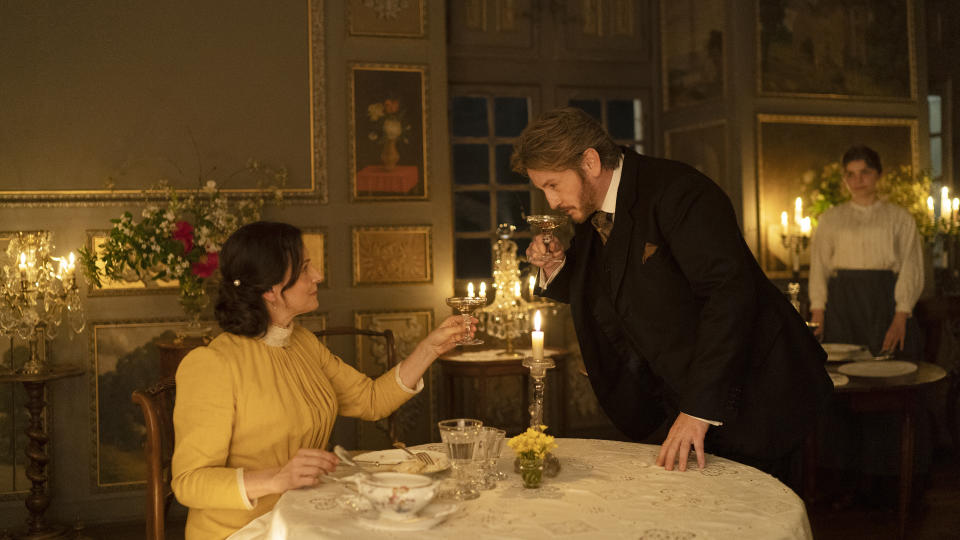Catering to the food movie, 'The Taste of Things' serves up a mouthwatering feast
NEW YORK (AP) — Think of food and movies and your mind could quickly whip up a five-course meal. Maybe a few hard-boiled eggs, to start, from “Cool Hand Luke.” A side order of toast from “Five Easy Pieces,” followed by the soup from “Ratatouille.” A main course of octopus from “Oldboy.” And let’s wash all that down with a $5 shake from “Pulp Fiction.”
Since before Charlie Chaplin made bread rolls dance in “The Gold Rush,” cinema and cuisine have been as intertwined as the spaghetti of “The Lady and the Tramp.” But a real food movie — one that doesn’t just stop for noodles (“In the Mood for Love”) or take a trip to Katz’s (“When Harry Met Sally…”) — is a rarer delicacy.
Those movies that fully invest themselves in the making and consuming food are more all-your-eyes-can-eat buffets. Films like “Tampopo,” that wildly erotic ode to ramen; “Babette’s Feast,” with its sumptuous banquet; and “Eat Drink Man Woman,” Ang Lee’s nourishing family meal.
It’s a rich and savory tradition that gets a delicious new serving in Trần Anh Hùng’s “The Taste of Things.” If ever a film was a feast, it’s Hùng’s. The movie, starring Juliette Binoche and Benoît Magimel, opens with a glorious 40-minute scene set in a late 19th century French country kitchen where a meal is being prepared.
Butter is sizzling. Loins of veal are roasting. Fresh crawfish are peeled. A fish is gutted. Soup bubbles. Few words are said but the kitchen hums. Utensils clank. Meringue burns. Steam rises.
There’s no music but it’s a symphony. Eugénie (Binoche), the right-hand woman of top chef Dodin Bouffant (Magimel), works with quiet, assured mastery. It’s as riveting as any action-movie set piece.
“I told my crew: This is my car-chase scene,” says Hùng.
Hùng, the 61-year-old French-Vietnamese filmmaker, traces his love of cinema to his father, who would come home in South Vietnam with detailed descriptions of movies he had seen at the cinema, riveting Hùng. But his mother’s kitchen, he says, “gave me my first feeling of beauty.”
“The Taste of Things,” which opens in select theaters Friday, isn’t just about cooking. Like most movies about food, its appreciation of cuisine has as much to do with love and art as recipes and ingredients. Loosely inspired by Marcel Rouff’s classic 1924 novel “The Passionate Epicure,” “The Taste of Things" unfolds as a later-in-life love story, one with added poignance since Binoche and Magimel were, themselves, a couple 20 years earlier.
To Hùng, who recently spoke by phone during a trip to Vietnam (he lives in Paris), says his mouthwatering opening scene, in all its sensory pleasures, is a paean to cinema.
“In musicals, it’s about harmony and the expression of love and pleasure,” says Hùng. “All of this was inside of me and I wanted to express it in this first scene in the kitchen where people move a lot. The level of gesture is enormous. How they move combined with complex camera movement, that came from musicals for me.”
France selected “The Taste of Things” as the country’s Oscar submission over the much-celebrated “Anatomy of a Fall." At last year’s Cannes Film Festival, it won best director for Hùng.
Hùng’s 1993 Oscar-nominated breakthrough “The Scent of Green Papaya” was likewise lush in atmosphere and sensuality. But while he admires some of the classic food movies — “Eat Drink Man Woman” especially — he doesn’t often feel they express what he wanted to accomplish with “The Taste of Things.”
“Today, I think films are really poor in cinema. Most of the time, it’s a theme of an important topic of the world today and then wrapped in very poor cinema. It looks like an illustration of a story,” he says. “To me, there is nothing to eat in that. I don’t feel full when I watch that type of film. There are too many like this. You can win the Palme d’Or with a very poor quality of cinema in the movie.”
Many reviews of “The Taste of Things” have come with a warning: Do not see this film on an empty stomach. But Hùng supplies no such caution.
“No, I think it’s interesting to be hungry, and waiting for the next meal,” he says, chuckling. “I never get panicked when I get hungry. I like to listen to it and wait so that what I have later is more delicious.”
Foodie photographs of a perfect plate have long been popular fodder for Instagram — the kind of gastronomy lampooned in the 2022 haute cuisine satire “The Menu.” But “The Taste of Things” is earthy and grubby. The food — none of which was artificially enhanced to look better — was all real. Famed French chef Pierre Gagnaire designed the dishes that were cooked on location by Michel Nave. For the film’s final meal, in which a triumphant pot-au-feu is prepared, some 90 pounds (40 kilograms) of meat were used.
Suffice to say, the cast and crew of “The Taste of Things” ate well.
“Everything we did was real,” says Hùng. "So at the end of the day, we had to eat everything. No waste at all.”
___
Follow AP Film Writer Jake Coyle at: http://twitter.com/jakecoyleAP

